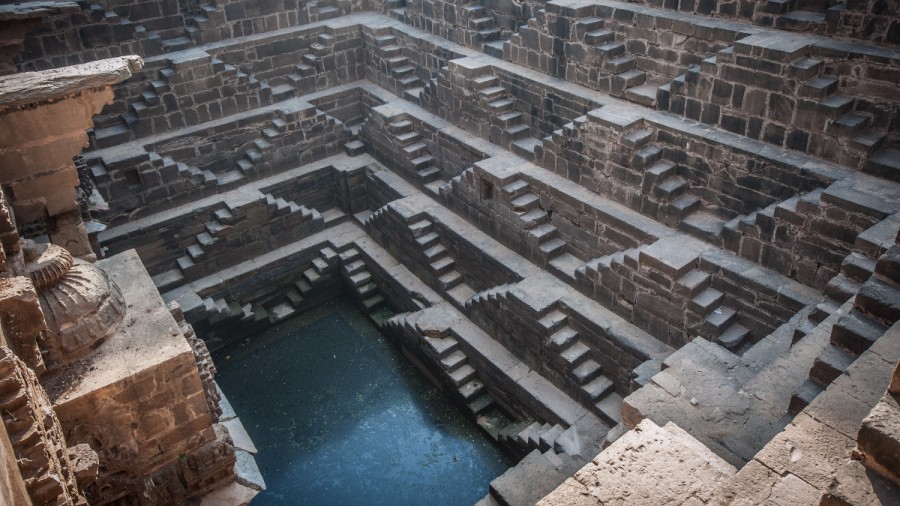Spotlight: Victoria Lautman On The Vanishing Stepwells Of India


Spotlight: Victoria Lautman On The Vanishing Stepwells Of India
India began building stepwells in the fourth century, with the more rudimentary forms first appearing in the second century. These ancient, water-harvesting subterranean structures were built to guarantee year-round water supply, and in places that were really dry, the water table extended nine stories underground.
Victoria Lautman has had a 30-year obsession with stepwells, visiting roughly 200 of them all around India. Lautman joined Worldview to talk about her adventures, these magnificent structures, and her hopes for more people to visit them.
On the different architectural forms stepwells can take
Victoria Lautman: If you only see one of these, you’re still going to be astounded. Really, nobody has heard about these, and part of my obsession with them was that they’d fallen off the grid of history. There’s so little written about these things because, basically, nobody cared and nobody still cares for the most part. Sometimes there are four different dates for one stepwell that can span like a thousand years, because it’s just guesswork.
As Hindu stepwells progress, by the time you get to the mid-11th century, there is an explosion of the most extraordinary architecture, sculpture, construction techniques. They could be cooling stations in addition to temples. Some were refuges along trade routes. In certain areas, you had to build these bridging elements to hold the earth at bay.
On the fusion of cultural styles in the architecture
Lautman: The Muslims made incursions into India and had a long tradition of fantastic water architecture, but they’d never seen stepwells before. But they began to build them themselves using the Hindu craftsmen who’d been doing this for centuries. So you get this Hindu style of architecture and carving with a lot of Islamic intrusions. There were certain things that Hindus didn’t know how to do, like domes and hexagons.
The difficulty she faced finding the stepwells
Lautman: I would say that 90 percent of the ones in this book, I’m asking cow herders and tea wallahs and some farmers, “How do I find these?” Thirty years ago somebody told me, “Oh do you see that dirt patch on that wall? Just go over that wall and look over.” I looked over and the ground just fell away.
One of the hallmarks of stepwells, which I find so appealing, is that they are hiding in plain sight. You don’t notice them necessarily. Some of them are right on the most tourist places in India, but people don’t know they’re there because there’s nothing saying, “Here’s a stepwell. Come over here.” So they’re hard to find and they’re hard to recognize. I’ve driven back and forth past several, and it’s like, “Oh, there it is!”
How her passion for stepwells has endured
Lautman: I seriously started looking at these five years ago, spending three months or so at a time in India travelling by myself, by the way, with a Hindi speaking driver, all of whom thought I was completely out of my mind. But thirty years ago was when I saw the first one, and it did stick with me, and if you’re persistent, maybe something good happens.
This interview has been edited for brevity and clarity. It was produced by Jerome McDonnell and edited by Vera Tan. Click the ‘play’ button to listen to the entire interview.